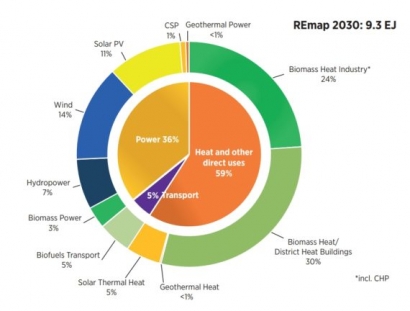
“With one of the world's largest and most ambitious renewable energy programs, India is taking a leading role in the energy transformation both regionally and globally,” said IRENA Director-General Adnan Z. Amin. “India possesses a wealth of renewable resources, particularly for solar and bioenergy development, which can help meet growing energy demand, power economic growth and improve energy access, as well as boost overall energy security.”
The report states solar energy will represent the second largest source of renewable energy use with 16%, followed by wind at 14%, and hydropower at 7% of the country’s total final renewable energy use by 2030. Biofuels — which can be used across the end demand spectrum, such as for transport, electricity generation and heating — would account for 62%.
Increasing renewable energy deployment could save the economy 12 times more than its costs by the year 2030, creating jobs, reducing carbon dioxide emissions, and ensuring cleaner air and water, with savings on health-related costs. Furthermore, the renewable energy technologies identified in the report would lower the demand for coal and oil products between 17% and 23% by 2030, compared to a business as usual scenario.
“Balancing economic growth and development, environmental protection, and energy security is a real challenge in India that can be tackled by enabling more renewable energy deployment,” said Dolf Gielen, Director of Innovoation and Technology at IRENA.
India’s population and economic growth, combined with accelerating urbanization, is expected to increase the number of people living in cities and towns from approximately 435 million in 2015 to 600 million by 2030. In addition, estimates suggest that 80 million households — roughly 300 million people — have limited or no access to electricity. Renewables can improve energy access for poor communities and bolster energy security through diversified, and largely indigenous, sources of supply.
For information: IRENA
Photo: IRENA

